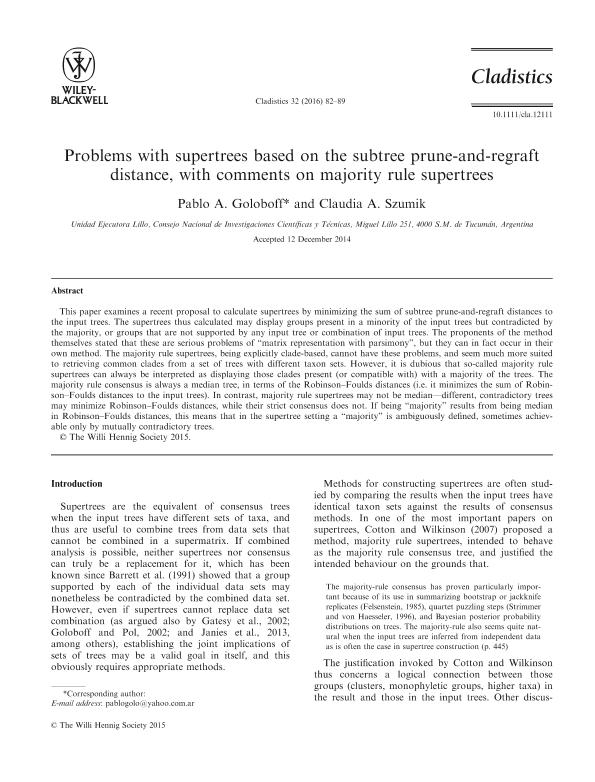Artículo
Problems with supertrees based on the subtree prune-and-regraft distance, with comments on majority rule supertrees
Fecha de publicación:
02/2016
Editorial:
Wiley Blackwell Publishing, Inc
Revista:
Cladistics
ISSN:
0748-3007
Idioma:
Inglés
Tipo de recurso:
Artículo publicado
Clasificación temática:
Resumen
This paper examines a recent proposal to calculate supertrees by minimizing the sum of subtree prune-and-regraft distances to the input trees. The supertrees thus calculated may display groups present in a minority of the input trees but contradicted by the majority, or groups that are not supported by any input tree or combination of input trees. The proponents of the method themselves stated that these are serious problems of "matrix representation with parsimony", but they can in fact occur in their own method. The majority rule supertrees, being explicitly clade-based, cannot have these problems, and seem much more suited to retrieving common clades from a set of trees with different taxon sets. However, it is dubious that so-called majority rule supertrees can always be interpreted as displaying those clades present (or compatible with) with a majority of the trees. The majority rule consensus is always a median tree, in terms of the Robinson-Foulds distances (i.e. it minimizes the sum of Robinson-Foulds distances to the input trees). In contrast, majority rule supertrees may not be median-different, contradictory trees may minimize Robinson-Foulds distances, while their strict consensus does not. If being "majority" results from being median in Robinson-Foulds distances, this means that in the supertree setting a "majority" is ambiguously defined, sometimes achievable only by mutually contradictory trees.
Archivos asociados
Licencia
Identificadores
Colecciones
Articulos(UEL)
Articulos de UNIDAD EJECUTORA LILLO
Articulos de UNIDAD EJECUTORA LILLO
Citación
Goloboff, Pablo Augusto; Szumik, Claudia Adriana; Problems with supertrees based on the subtree prune-and-regraft distance, with comments on majority rule supertrees; Wiley Blackwell Publishing, Inc; Cladistics; 32; 1; 2-2016; 82-89
Compartir
Altmétricas




